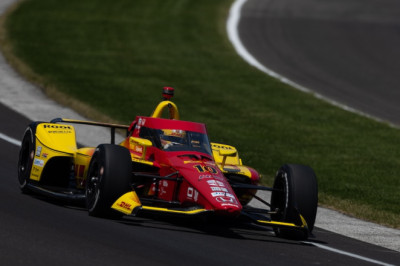
Clean filters are vital to keeping your vehicle performing at its best, but most people don't think about cleaning the filters themselves. In typical cases, the fix for a dirty filter is to buy a new one. It's a slightly different story for diesel particulate filters (DPFs), however. These play a vital role in reducing diesel emissions and are meant for the long haul. To help, there are three levels of cleaning that can help extend their use even longer.
The most intensive cleaning process involves removing the filter from the truck entirely so it can be baked in an oven, submerged in a water-based solution, or subjected to ultrasonic sound waves to remove stuck-on soot and whatnot. Before it comes to that, you can also use a DPF's built-in "regeneration" function so that it essentially cleans itself as the motor runs. Regeneration burns the waste material at a high enough temperature to eliminate it. In addition, you can force the system to regenerate on demand in some situations.
Then there are DPF-cleaning additives, which are what we're looking at today. These fall under the same heading as engine oil additives or transmission fluid additives, with pros and cons that are hard to pin down with scientific accuracy. But we'll do our best, with some help from loyal Jalopnik readers.
DPF cleaners do contain some detergents and solvents to deliver some amount of cleaning power to the filter, but most of the heavy lifting here is done by fuel–borne catalysts in the cleaner liquid. When you mix the additive with your diesel fuel, the catalysts effectively lower the temperature needed for soot to combust during the regeneration process.
Normally, soot begins burning at about 600 degrees Celsius (1,112 degrees Fahrenheit), but DPF cleaner with a fuel-borne catalyst can bring that down into the range of 350 to 450 degrees Celsius (662 to 842 degrees Fahrenheit). The more soot you regenerate, of course, the fewer particulate emissions get into the air. It's also worth noting that, for more serious build-ups, you can use a cleaner spray that you apply directly to the DPF.
Why are properly operating DPFs so important? Remember, modern diesel engines still outsell gas when it comes to HD trucking, and all those motors make a lot of particulate emissions. Yet according to the EPA (opens a PDF), properly certified DPFs can reduce particulate matter by more than 85%. Some can have nearly the same effect on hydrocarbon and carbon dioxide emissions.
Although leadership adjustments at the EPA may mean changes in pollution laws that will eventually affect DPFs, the EPA's influence on the culture will no doubt live on. For example, the EPA is the source for the common initialism "YMMV," which comes from the agency's fuel-economy disclaimer that first saw the light of day in the 1970s. And "your mileage may vary" seems to be particularly apt for DPF cleaners.
You've got many people (via Ford Trucks Enthusiasts) saying that modern diesel engines clean themselves fine as you drive, thanks to regeneration. Others point out that regeneration requires a certain level of heat that your engine may not reach on short trips, but that would still call for manual regeneration, not DPF cleaner.
There are those who are pro-additive as well, with one commenter on CruzeTalk claiming to have tested two different DPF cleaners — and said that both products seemed to be "very effective." You can also find many Amazon shoppers who give DPF cleaners great grades.
















